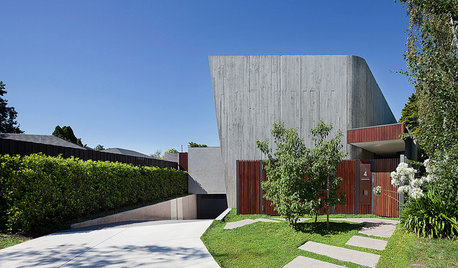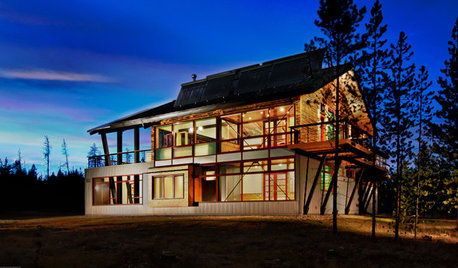Long term soil improvement plan
bassopotamus
9 years ago
Related Stories

DECORATING GUIDESSmall Changes to Simplify Your Long-Term Storage
Conquer your attic and basement storage in more than a day, with these easy, bite-size steps for sorting, storing and protecting your stuff
Full Story
Houzz Tour: A House Built for the Long Term
The designers of this one-of-a-kind home made the most of its challenging location to deliver enduring comfort and style
Full Story
GARDENING GUIDESHow to Pick a Mulch — and Why Your Soil Wants It
There's more to topdressing than shredded wood. Learn about mulch types, costs and design considerations here
Full Story
GARDENING GUIDESGet the Dirt on Your Garden’s Soil
Understand how your soil supports your plants so you can ensure your garden’s success
Full Story
FARM YOUR YARDHow to Get Good Soil for Your Edible Garden
The nutrients in your soil feed the plants that feed you. Here are tips on getting it right — just in time for planting season
Full Story
GREEN BUILDINGZero Net Energy: A Hardworking-House Term to Know
Homes that consume only as much energy as they produce by renewable means are a goal for builders. Learn what ZNE means for you
Full Story
DECORATING GUIDESImproving a Rental: Great Ideas for the Short and Long Haul
Don't settle for bland or blech just because you rent. Make your home feel more like you with these improvements from minor to major
Full Story
GARDENING GUIDES10 Solutions for Soggy Soil
If a too-wet garden is raining on your parade, try these water-loving plants and other ideas for handling all of that H2O
Full Story
GARDENING GUIDESGardening Solutions for Heavy Clay Soils
What’s a gardener to do with soil that’s easily compacted and has poor drainage? Find out here
Full Story
GARDENING GUIDESHow to Stop Worrying and Start Loving Clay Soil
Clay has many more benefits than you might imagine
Full StoryMore Discussions








mad_gallica (z5 Eastern NY)
bassopotamusOriginal Author
Related Professionals
Erie Landscape Architects & Landscape Designers · Glassmanor Landscape Architects & Landscape Designers · Norton Shores Landscape Architects & Landscape Designers · Wake Forest Landscape Contractors · Fair Lawn Landscape Contractors · Mahwah Landscape Contractors · Matteson Landscape Contractors · Saint John Landscape Contractors · Markham Landscape Contractors · Baker Decks, Patios & Outdoor Enclosures · Kansas City Decks, Patios & Outdoor Enclosures · Montgomery County Decks, Patios & Outdoor Enclosures · Portage Decks, Patios & Outdoor Enclosures · San Jose Decks, Patios & Outdoor Enclosures · Tomball Decks, Patios & Outdoor Enclosureslazy_gardens
bassopotamusOriginal Author
wayne_5 zone 6a Central Indiana
wayne_5 zone 6a Central Indiana
bassopotamusOriginal Author
PKponder TX Z7B
nancyjane_gardener
drmbear Cherry
Kimmsr
toxcrusadr
bassopotamusOriginal Author
Embothrium
bassopotamusOriginal Author
Laurel Zito
bassopotamusOriginal Author
Kimmsr
toxcrusadr
idaho_gardener
Laurel Zito
Kimmsr